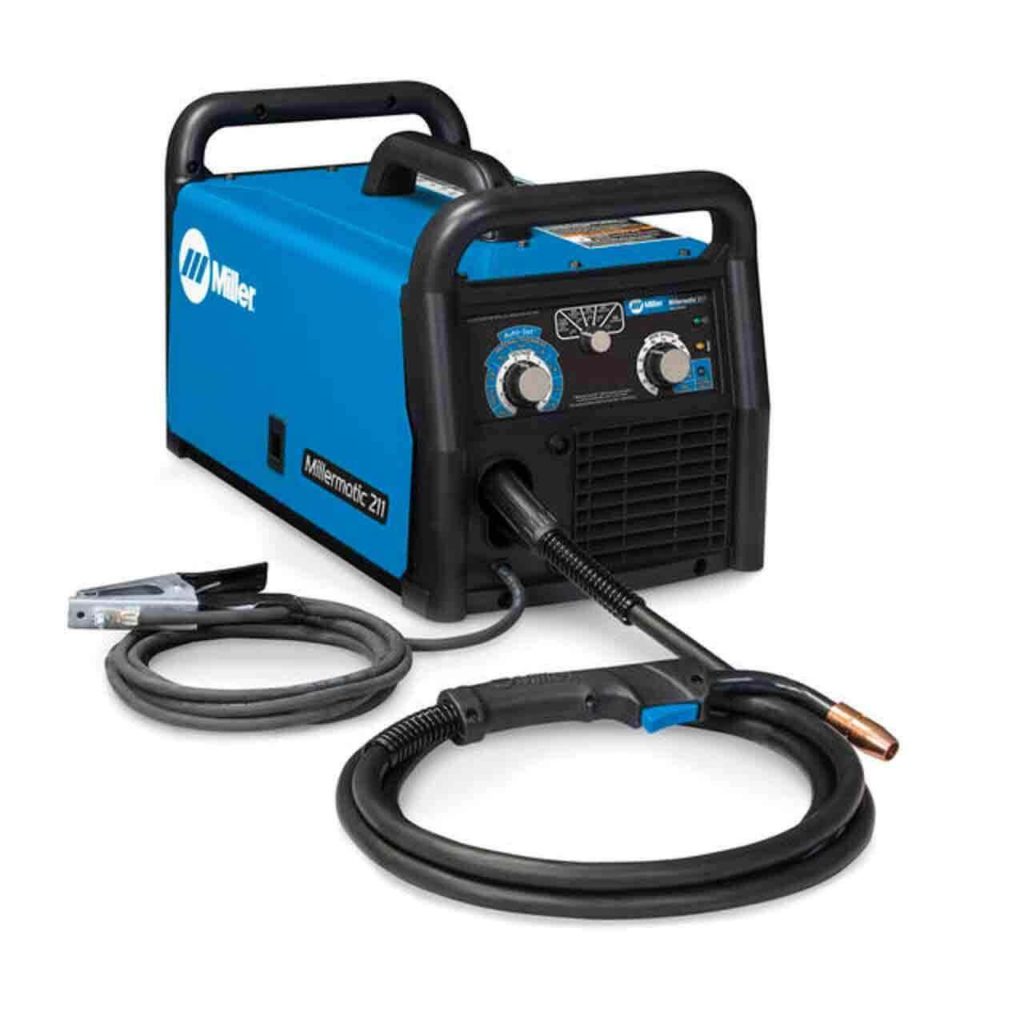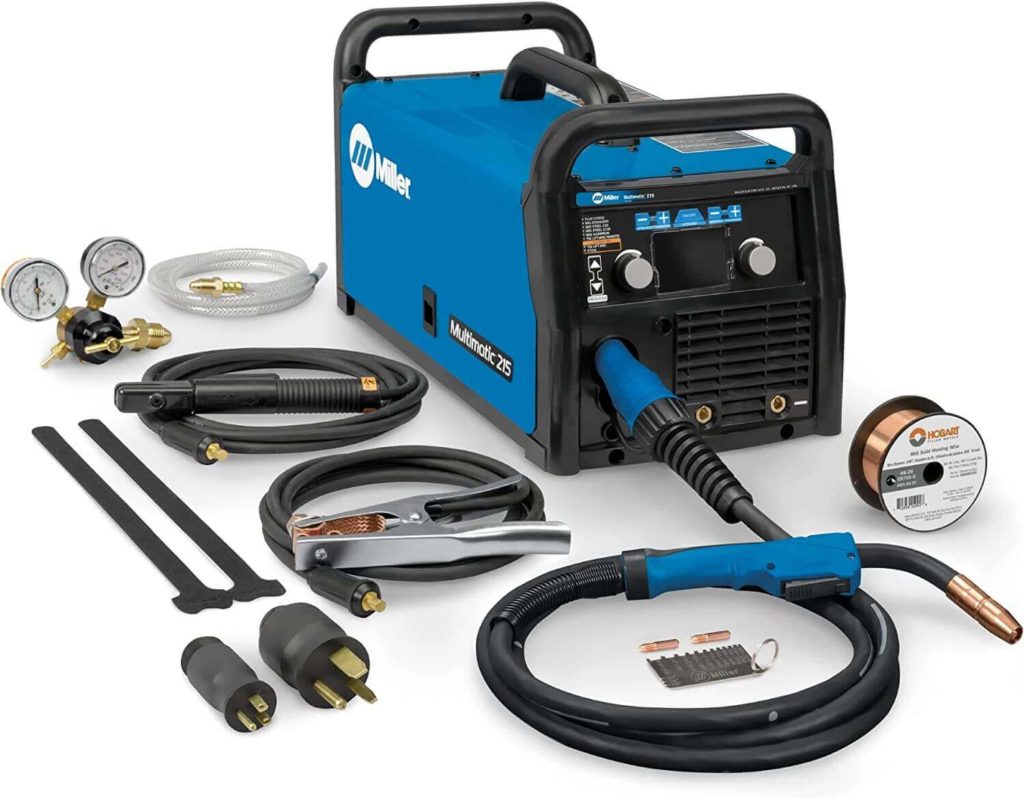This article compares Miller 211 Vs 215 to discover which one performs better.
The Miller 211 and 215 products are made with top-notch, convenient features that draw customers in. It can be really difficult to choose the best welder for you from these two prototypes created by the same company. Therefore, we have compared Miller 211 and 215 below so that you may choose the equipment that best suits your requirements.
What Is In Miller 211 Welder?
The Miller 211 welder is a remarkable device that has an inverter mechanism that absorbs the low voltage and provides precise ARC performance. A multi-voltage plug is present. Depending on the material, it has the power to weld mild steel that is 1/4 inch to 3/8 inch thick.
Its 38 lb weight, 30 to 230 amp amperage range, and 120 or 240-volt operation allow it to be used in both domestic outlets and industrial settings. You can operate a 5 kW or 10 kW generator during an outside job. Despite the machine’s small size and low weight—only 38 lbs—it offers a thorough and precise piercing at a remarkable speed.
Which Cases Require Miller 211?
The Miller 211 is the best tool for light-duty garage work, small-scale industrial jobs, or carpentry. Let’s say you are undertaking an overhaul job and some components are essentially hidden. In that case, you may accomplish that swiftly thanks to its admirable characteristics, which allow you to work effectively in remote locations. It offers improved automatic setup capabilities. The front half of it contains buttons that are easy to use. A blue LED will be visible when you select the wire thickness, alerting you that the auto setup has been activated. The next step is to choose the welding type from a list of five options, and the final step is to select the material thickness.
Pros and Cons of MILLER 211
Pros
- The safety features on this bike are fantastic. The gadget guards against thermal overloading if the duty cycle goes over its maximum.
- It is portable and light in weight. It has sufficient strength and capability to provide a fluid ARC and welding performance.
- The flexible Miller 211 machine has a twin voltage connection. It has a fan on demand to lessen the debris.
Cons
- To weld aluminum, you need to buy a separate spool gun.
- It’s not very stable to use the ground fastener.
- This machine’s duty cycle is insufficient for doing heavy-demand work. But for DIY jobs, it’s adequate.
What Is In Miller 215?
Miller 215 is a strong vehicle with a smooth takeoff feature. The motor speed starts out slowly but quickly rises up to its average velocity. It requires an input voltage of between 120 and 240 volts to run.
Metals with a thickness of 3/8 inches can be easily welded with it. It offers features for adjustable voltage and wire feed velocity. The automatic spool gun can detect whether a spool gun or MIG gun is attached to it.
When Is Miller 215 Used?
The Miller 215 has all the features a beginner or hobbyist may possibly need. Anyone interested in do-it-yourself or simple garage projects should use this welder. You must choose the welding type, the material’s thickness, and the rod or wire thickness in order to use its automated elite start option. The machine can arbitrate the welding variable after receiving this data. You can also switch between different welding types thanks to it.
Pros and Cons Of Miller 215
Pros
- Although a comprehensive instruction manual is provided, the system can also be set up without it.
- Due to the fact that it includes two gas inputs for MIG and TIG, you wouldn’t need to replace gas tanks.
- It is strong enough to cut through heavy metal and has a lot of appealing characteristics.
Cons
- The machine does not include a TIG kit or spool gun. It must be purchased separately.
Recommended Post: Hobart 210 MVP Vs Miller 211
Major Variations Between Miller 211 Vs. Miller 215
Below are the differences between Miller 211 Vs. 215
- Flux-cored and MIG welding are the two methods provided by Miller 211. Flux cored, MIG, Stick, and TIG welding are the four welding methods offered by Miller 215.
- The duty cycle for the 211 is 40% at 150 Amps. In contrast, because the 215 welds a variety of materials, the duty cycle cannot be set and is almost different for each.
- 20 to 230 Amps is the amperage range for 215 while 30 Amps to 230 Amps is the range for 211.
- Miller 211 can weld dual AC and DC but Miller 215 can only weld DC in polarity.
Conclusion
Miller 215 would be a better option, according to the comparison of Miller 211 and Miller 215, because it is more adaptable and flexible and works well for both domestic and commercial applications. While 211 only offers two welding procedures, 215, which is primarily utilized for repair work, offers four.
FAQs

With 8 years of experience a senior welding instructor and safety equipment researcher and writes articles, reviews and guidelines on helmets and other welding and safety gears at Welder Choice, and other written works have been published in various publications.


